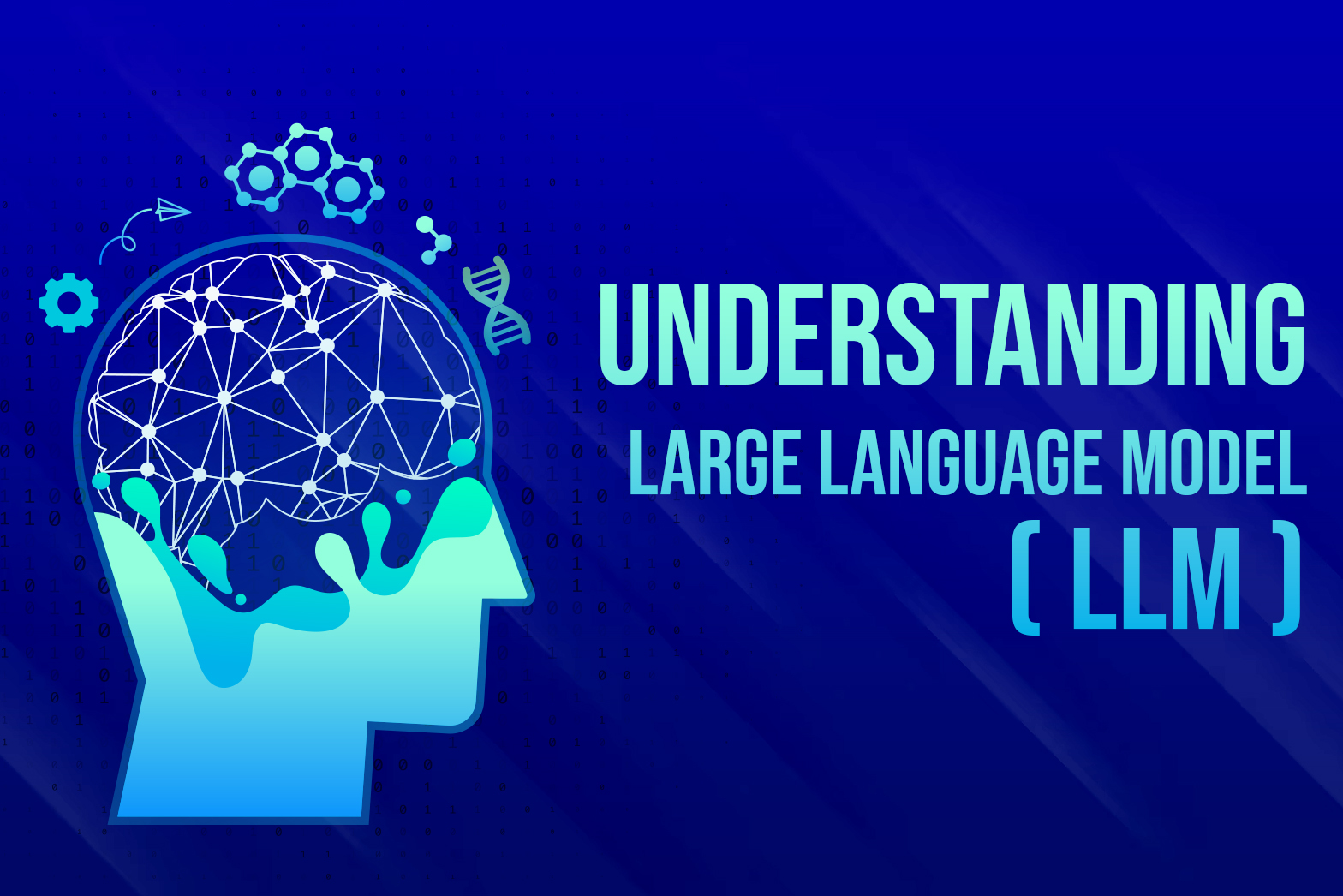Understanding Large Language Model ( LLM )

Large language models (LLMs) are an important achievement in artificial intelligence, particularly natural language processing (NLP). These models use deep learning techniques to interpret, generate, and interact with human language in a highly sophisticated way. LLMs are distinguished by their massive scale, which frequently includes billions of parameters, allowing them to capture detailed patterns, grammar, context, and nuances in text.
LLMs are developed by training on large datasets obtained from a variety of text corpora, such as books, papers, websites, and other written materials. This comprehensive training allows them to learn a variety of language-related tasks, including text production, translation, summarization, and sentiment analysis. They can also have conversations, write articles, code, and do a variety of other things.
LLM training normally involves two steps: pre-training and fine-tuning. During the pre-training phase, the model derives generic language patterns from big datasets. The fine-tuning phase involves training the model on specific datasets or tasks to improve its performance in certain domains or applications.
LLMs have become essential in a variety of applications, including virtual assistants, chatbots, content production tools, and language translation services. Examples of LLMs include OpenAI’s GPT series, Google’s BERT, and Microsoft’s Turing NLG. These models have transformed the way we interact with technology, enabling more natural and human-like communication capabilities.
Benefits of Large Language Model ( LLM )
Large Language Models (LLMs) have several advantages that improve many facets of technology and everyday life. They greatly enhance natural language generation and interpretation, allowing more logical and contextually appropriate interactions in applications such as virtual assistants and chatbots. LLMs are useful tools in various domains since they offer a wide range of applications, such as summarization, language translation, and content production. By removing linguistic barriers, demystifying complicated content, and offering voice assistance, they increase accessibility, which is advantageous for people with disabilities.
Automating time-consuming, repetitive processes like creating reports and email drafts boosts productivity. Tailored interactions that are based on personal choices improve personalized user experiences. LLMs support knowledge and innovation in research and professional settings by helping with literature reviews, idea generation, and information retrieval. Their capacity to learn and adapt continuously guarantees continuous improvement, and their scalability makes them appropriate for large-scale applications. Moreover, LLMs facilitate international operations and communication by supporting multilingualism. All things considered, LLMs are effective instruments that promote productivity, innovation, and accessibility in a range of fields.
To sum up, large language models (LLMs) greatly increase language generation and understanding, improving our engagement with technology. Efficiency and productivity are increased by their adaptability to a wide range of applications, including automation and content creation. Personalized user experiences, multilingual communication support, and accessibility enhancement are all areas in which LLMs are vital. By supporting research and innovation, they advance creative processes and the body of knowledge. Although LLMs are complex, they are also incredibly valuable tools for improving daily life and advancing technology since they provide scalable and constantly improving solutions that meet a wide range of needs.
Uses ofLarge Language Model ( LLM )
Large Language Models (LLMs) have considerably advanced the field of Natural Language Processing (NLP), allowing for a wide range of applications that rely on understanding and producing human language. In terms of content creation, LLMs can produce high-quality articles, reports, stories, and marketing copy while increasing productivity and creativity. They are also excellent at summarizing, which reduces lengthy materials into succinct summaries while maintaining important information, and translating languages, which enables correct communication across language barriers. LLMs drive chatbots and automated help desks in customer care, giving prompt, accurate answers to frequently asked questions and problems. This increases service efficiency and frees up human agents to work on more difficult jobs.
Beyond these uses, LLMs are essential for education and training since they provide individualized tutoring, educational support in a range of topics, and language acquisition assistance by assisting students in honing their skills. Through the analysis of patient data and medical records, they aid in the diagnosis of diseases in the healthcare industry and offer patients clear and concise support and information. LLMs help legal professionals handle complicated legal materials more accurately and efficiently by reviewing documents and conducting legal research. LLMs are used in the creative arts for composing lyrics, scripts, and other literary genres. They are also useful in gaming for enabling realistic conversation and engaging storytelling for non-player characters.
How Large Language Model Works on Chatgpt
The largeLanguage model (LLM) has become popular because of its ability to understand or generate the human language. Large Language models work through advanced steps that involve training, and generating human language.
Training phase
Data Collection: LLMs are trained using enormous datasets containing a wide range of content from books, journals, webpages, and other sources. This massive data collection allows the model to grasp the intricacies of language.
Pre-training: During this phase, the model is trained using unsupervised learning methods. It learns to predict the next word in a sentence based on the previous words, which helps it acquire syntax, world facts, and some reasoning abilities.
Generating Responses
Prediction: Using the patterns and knowledge it gained during training, the model predicts the most likely sequence of words to produce a coherent and contextually suitable response.
Providing Output
Formatting: The generated response has been formatted into usable text. This phase ensures that the output is clear and easy to interpret.
Continuous Learning
Feedback & Updates: While the fundamental model does not learn from individual interactions in real time to protect users’ privacy, developers update and improve the model regularly based on aggregate user feedback and advances in artificial intelligence research.
ChatGPT uses LLM skills to interpret and generate human-like text through lengthy training and advanced algorithms, allowing it to engage in meaningful and contextually relevant discussions with humans.
Recent Posts
GEO Vs AEO Vs SEO Comparison Guide – Revolution of AI Marketers in 2025
We’re entering a new era where AI and human curiosity come together and if your business isn’t ready, you could fall behi...
WordPress Plugin All-in-One WP Migration Security Bypass (2.0.4)
The All-in-One WP Migration plugin for WordPress has a security bypass vulnerability that could let attackers perform restric...
FAQ: All About the New Google “Hummingbird” Algorithm
Google has a new way of sorting information when searching for something. This system is called “Hummingbird.” Here's wha...
Meta new update to increase lead quality
Are you running Facebook Lead Ads but unhappy with the quality of leads you're getting? A key setting and a recent update cou...
